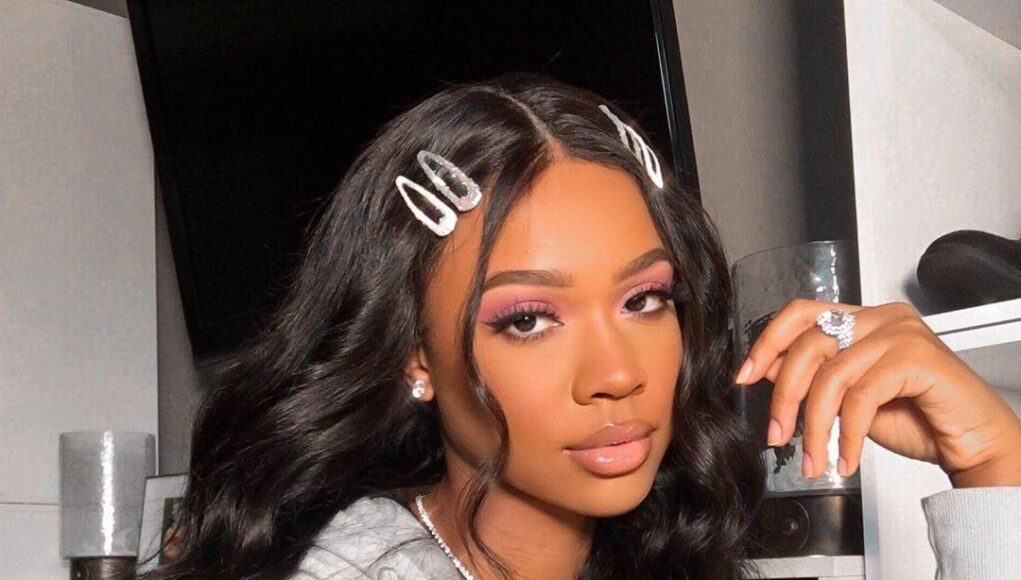Wigs are definitely having a moment right now and, NGL, I’m not sure why it hasn’t happen sooner. Think about it: Wigs are so damn versatile. Depending on the type of wig you choose, you can cut it, curl it, or color it so that it fits your vibe. Plus, they’re a great protective style option—wigs cover your natural hair from any potential damage, while still giving you the freedom to experiment with all types of looks. But before you go in on your wig, a few ground rules need to be established. That’s why I reached out to Brittany Johnson, hairstylist and senior content manager for Mayvenn Hair, to run us through exactly how to style a wig without ruining your hair.
According to Johnson, human hair wigs are more expensive but they look (and feel) more realistic, they’re safe for heat styling, and if you take care of them right, they’ll last you at least a year. Synthetic wigs look less natural and you usually can’t heat style them (more on that below), but they’re way more wallet-friendly and need less upkeep than human hair wigs, says Johnson.
Eh, it’s a bit complicated—you want to read the wig manufacturer’s label before bringing a flat iron or curling wand near your synthetic wig, says Johnson. The thing is, sometimes wigs are marketed as synthetic, but they’re actually made up of a blend of human and synthetic hair, meaning they can be styled with low heat. Typically though, Johnson says a full synthetic wig isn’t something that you can style with hot tools. They usually come in preset looks that are set into the synthetic fibers of the wig, so creating a different look without ruining the wig is super difficult, she adds.
With human hair wigs, you’ve got way more options when it comes to styling your hair, says Johnson. Remember: You should treat these wigs like you would your own hair. This means spritzing on a heat-protectant spray all over before using any hot tools. Johnson also recommends removing your wig while you sleep and placing it on a wig head (or laying it flat in a silk or satin bag) to keep your style intact for longer, while also limiting your use of heat.
TBH, prepping your human hair wig isn’t all that different from getting your own hair ready for styling. First, you want to make sure that your wig is fully detangled, says Johnson. Use a detangling brush to smooth out any knots and tangles. Pro tip: Start from the ends and move your way up while brushing. This’ll make sure that you don’t end up with tons of breakage.
Next you’ll apply a light leave-in conditioner (to increase moisture levels) and a heat protectant spray (to protect your wig from heat damage). If you want to use as few products as possible, Johnson recommends looking for a two-in-one product that’ll hydrate and protect. If your wig is wavy or curly, Johnson suggests using a curl-enhancing leave-in product, then either letting the product air-dry or using a blow-dryer and diffuser on low heat. This’ll help you get some well-defined texture.
What tools and products should you use to style a wig?
Any and all hot tools are fair game if you’re dealing with a human hair wig. But, as Johnson says, you want to try to avoid constantly heat-styling your wigs, since excess heat can lead to potential damage. Same goes for wash day—Johnson suggests skipping the blow-dry and air-drying your wig whenever you can.
Johnson also recommends avoiding products with silicones (especially when it comes to cleansing) to prevent buildup (which, for the record, can make it harder for the hair to hold on to moisture, leaving your wig looking and feeling hella dry). That said, if there’s silicone in your favorite gel or styling product (you know, that one you’re just not willing to give up), Johnson says you can use a clarifying shampoo, followed by a deep-conditioning treatment, to bring your wig back to life.
Yes, but it depends on what wig you have, says Johnson. There are four types of wigs: ready-to-wear, lace front, 360 lace, and full lace. Johnson recommends getting a 360 lace wig or a full lace wig if you want the ability to create a true updo. “The entire hairline on these wig units are fully customizable,” she says.
With a 360 lace wig, there’s lace around the full perimeter of the wig, plus a wig cap that’s placed in the center. The lace blends right in with your scalp, so you’re able to throw your hair up into a ponytail or a bun. Johnson says they typically go from $150 to over $400, depending on where you buy the wig from, the type of hair, and the length.
A full lace wig is exactly what it sounds like—the base of the wig is made up of lace, says Johnson. You literally have all the options when it comes to styling full lace wigs—because the lace mimics the look of your scalp, you don’t have to worry about the tracks underneath showing, which means you can wear it any way your heart desires. P.S. though: They can get expensive, costing anywhere from $200 to well over $600.
If you don’t care about rocking a high pony or a messy bun, Johnson recommends opting for a lace front wig instead of a ready-to-wear wig. A lace front wig is more expensive than a ready-to-wear wig (they range from $150 to over $400, while ready-to-wear wigs range from $50 to $200) but because lace front wigs have a 4×4 inch lace closure in the front of the piece, they give you more styling options.
Even though a human hair wig will be more $$$ than a synthetic wig, it’s for sure worth it if you want to have some fun styling the unit. A wig gives you the freedom to switch up your look without putting stress on your real hair or without actually committing to a style. Just keep in mind that even though it isn’t your actual hair, you still want to treat it with love (aka always using heat protectant, detangling gently, that kind of thing) if you want it to look shiny and stay healthy.









